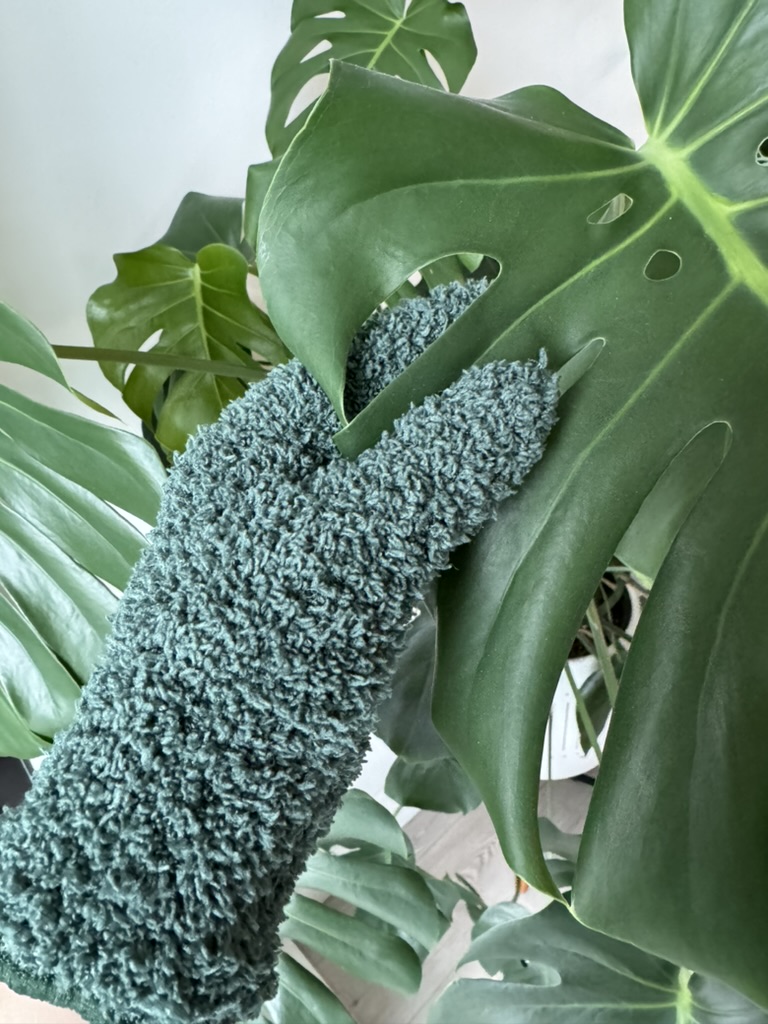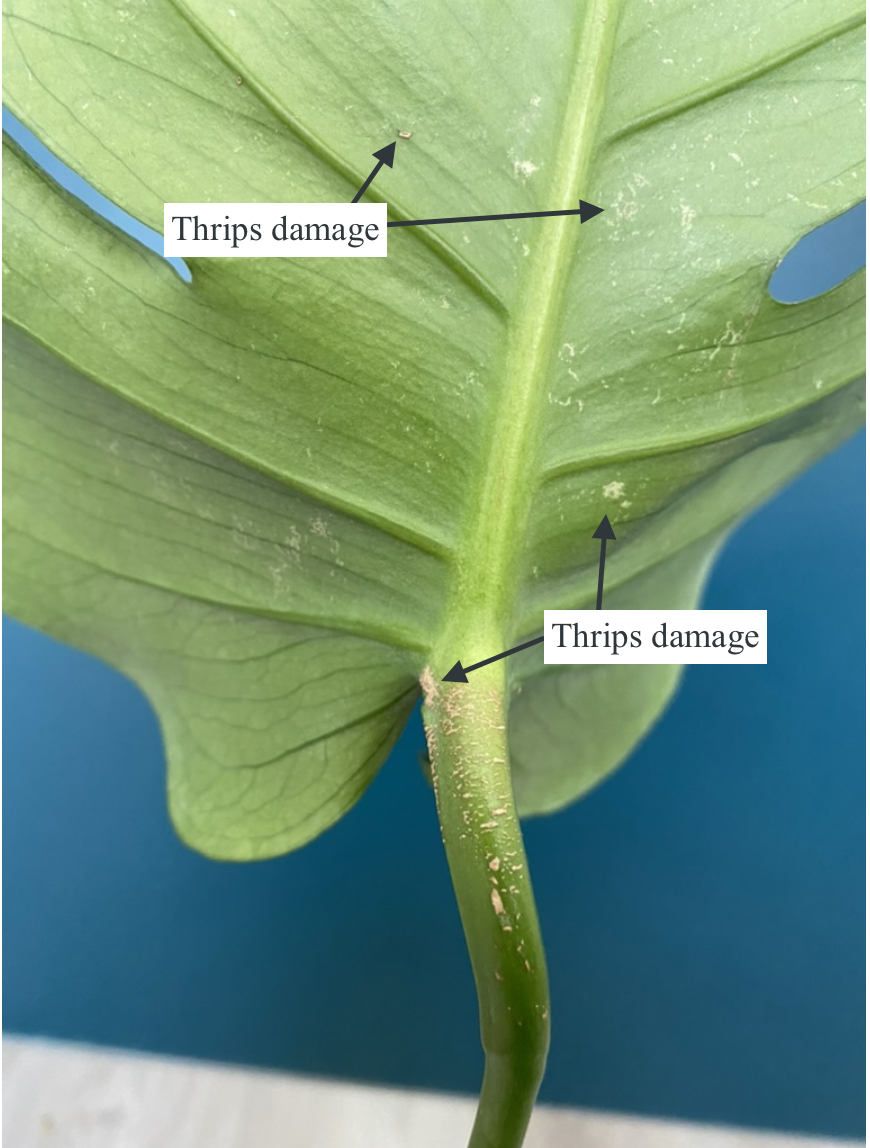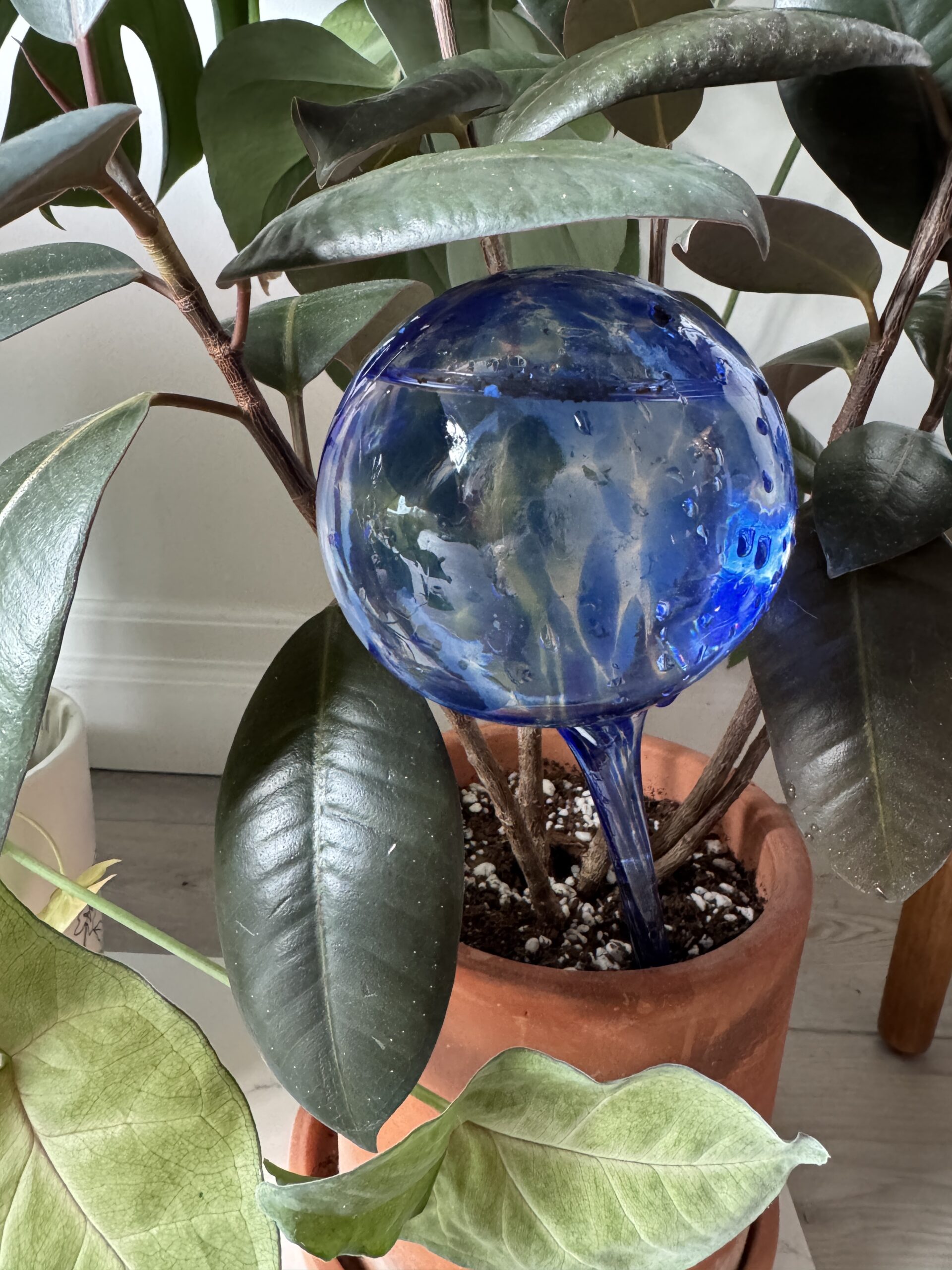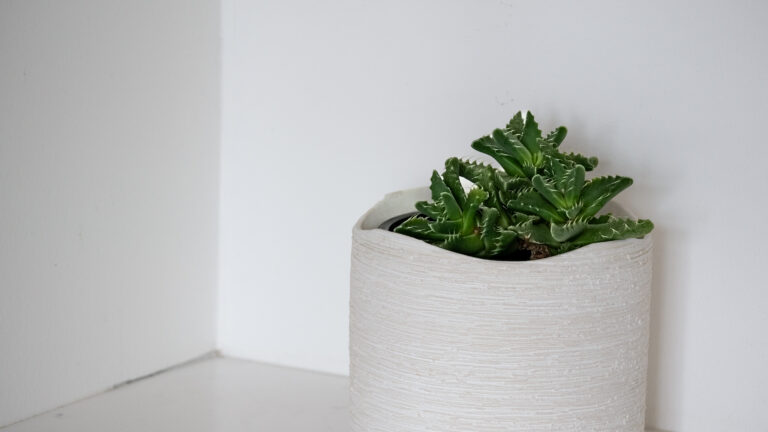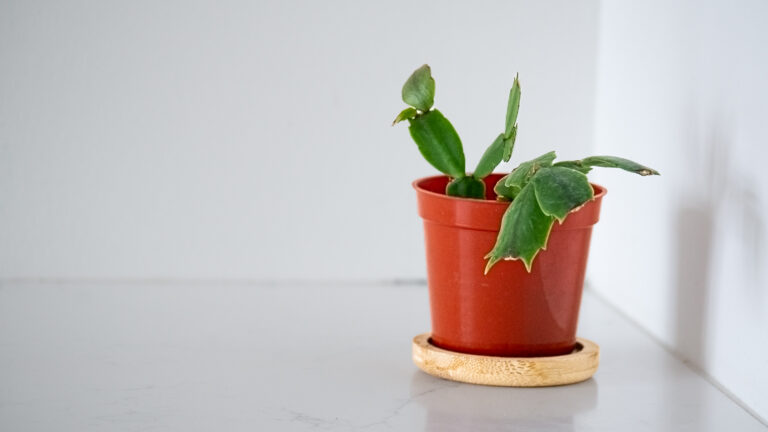In the summer of 2022, I had an Thrips infestation. Through a lot of trial and error, I figured out the most effective way to get rid of thrips on my houseplants.
In this guide I will go over the different methods to get rid of thrips, the method I found most effective, an overview of what thrips are, and the products I found most effective in getting rid of thrips.
What Are Thrips?
Thrips are tiny, slender insects that can resemble a speck of dirt to the human eye. They are less than 1/16 inches long, and the adults have wings.
Thrips feed on plants by puncturing the plant’s cells in the leaves and sucking out the nutrients. This can cause damage to leaves, stunted growth, distorted leaves, and eventually death.
Plants need nutrients to survive, so if the thrips suck out all of the nutrients from the plant, then the plant can die.
In addition, thrips can transmit plant viruses, which can make matters worse.
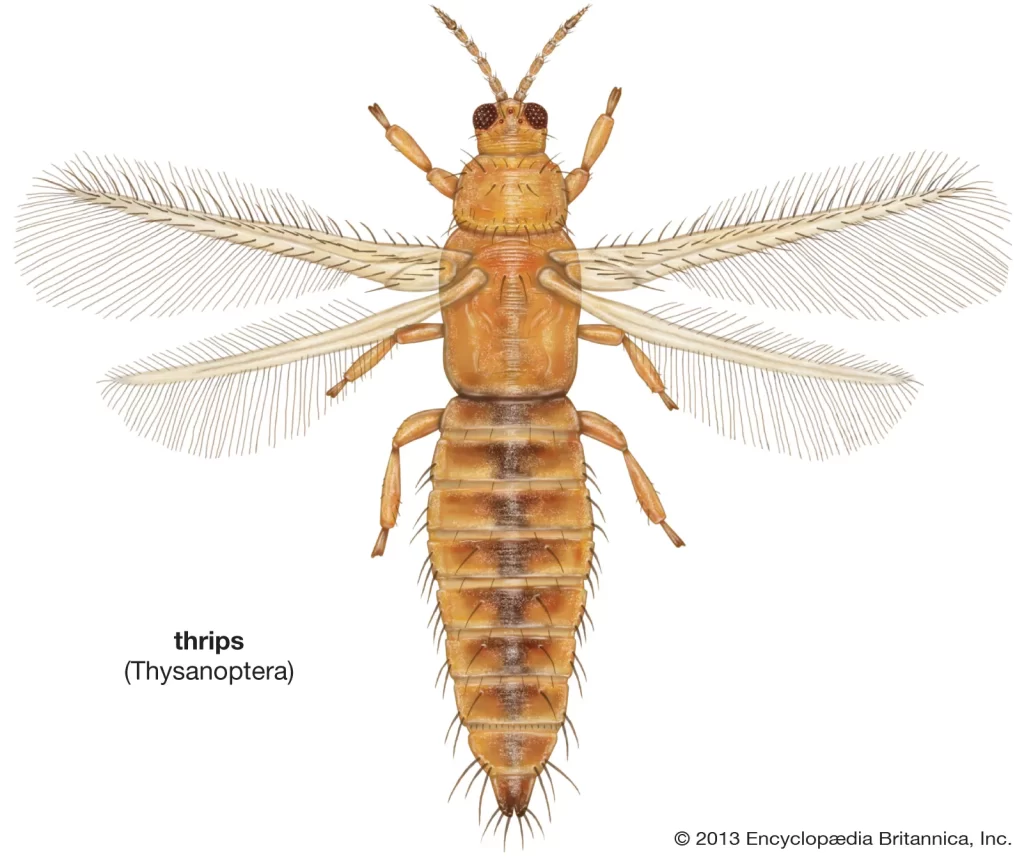
Why Are Thrips So Hard To Get Rid Of?
1. Thrips can be challenging to spot.
They are so small that they often look like a speck of dirt. The truth is, as houseplant owners, it’s not uncommon to have a speck of dirt on your leaves. Also, they are dormant in the morning so you might not see them if you inspect your plants in the morning. You will see thrips in the afternoon as they come out to feed.
2. Reproduction Cycle.
The thrips reproduction cycle is kind of wild. They lay their eggs inside the plant tissue of the leaf, on the surface of the leaf, or the stem. Thrips will lay 1 to 10 eggs at a time. The eggs are tiny (less than 0.2mm in length) and typically white or yellow. The eggs can hatch in just a few days and the larvae begin sucking out the plants nutrients immediately.
The larvae don’t have any wings, thankfully. In just a few days, the larvae turn into pupae. In this stage they shed their exoskeleton and turn into adults. Adult thrips mate, lay eggs, and can fly. Some thrips can even reproduce asexually. Given how quickly this process happens, you can go from having hardly any thrips to an infestation quite quickly.
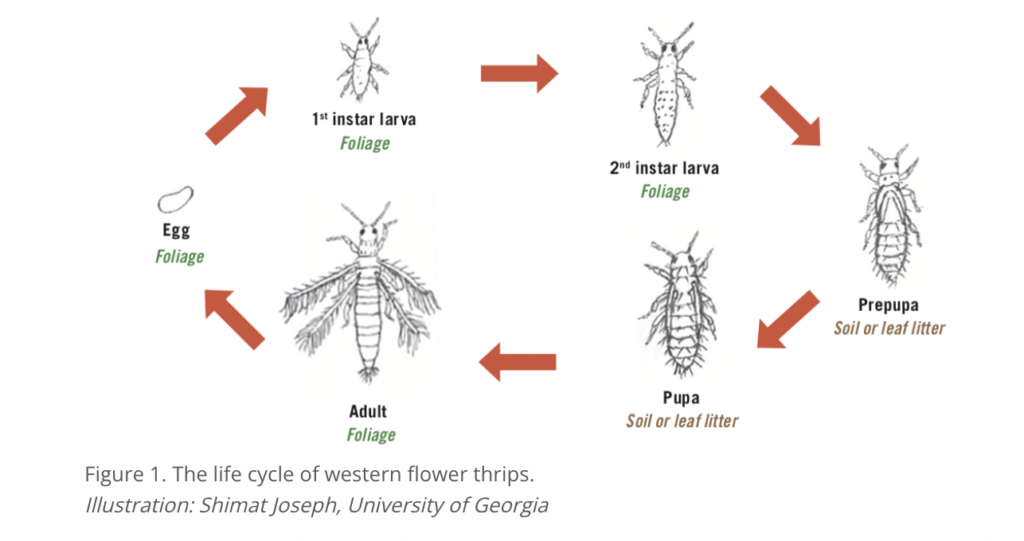
3. It can be challenging to get them with pesticides.
Given that they lay their eggs inside of the tissue of the leaf, simply spraying the leaf and wiping it, doesn’t mean you have killed the thrips at all stages.
4. Some thrips have genetically modified and are resistant to pesticides/insecticides
With repeated use of the same type or class of pesticide, it will no longer be as effective on thrips populations. This can happen within a few years. It’s important to remember that you don’t know how old the thrips population is that has entered your home, and the thrips in your home may belong to this group.
How Do I Know If I Have Thrips?
- Thrips damage can look like a pale, almost white dot (or many dots) on the leaf of a plant (see image of Monstera Deliciosa leaf below). Sometimes the markings left are actually darker (like on my Golden Pothos).
- Around the stem, you may also notice odd markings on the stem that kind of looks like blistering. I have found thrips around where the stem and the leaf meet. Especially if the stem is attached to the leaf in the way it is on Monstera Deliciosa, Pothos, Syngonium, etc.
- You see a lot of tiny black dots on your foliage. They might look like specks of dirt, but if you pay close attention, you can see them move.
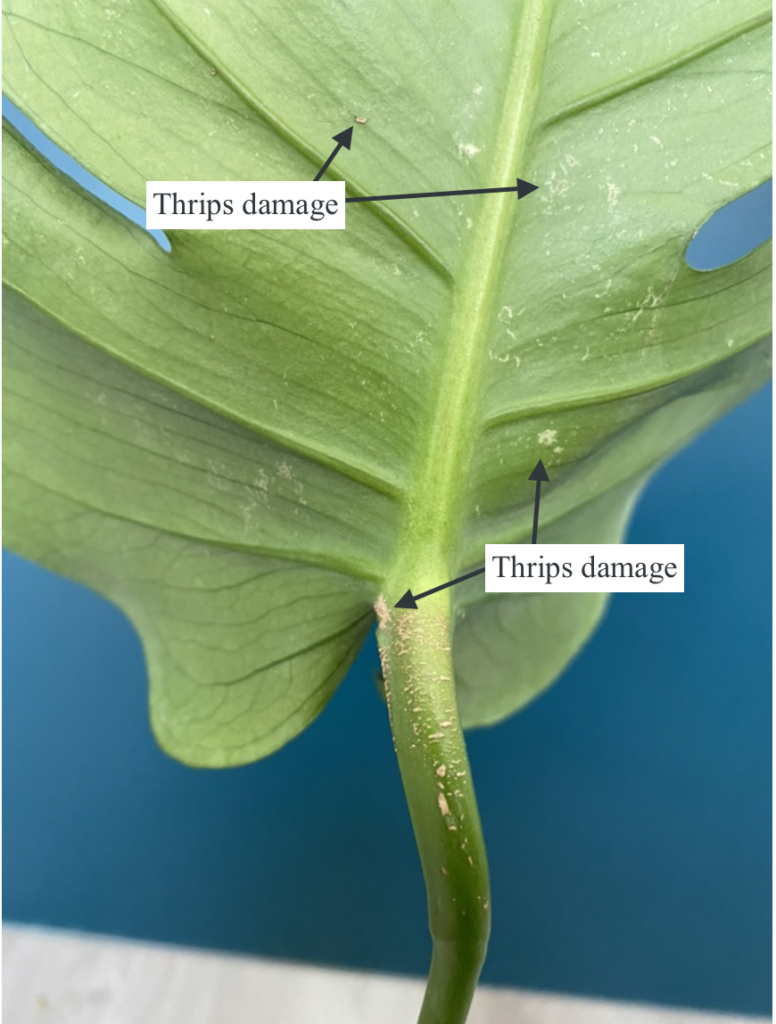
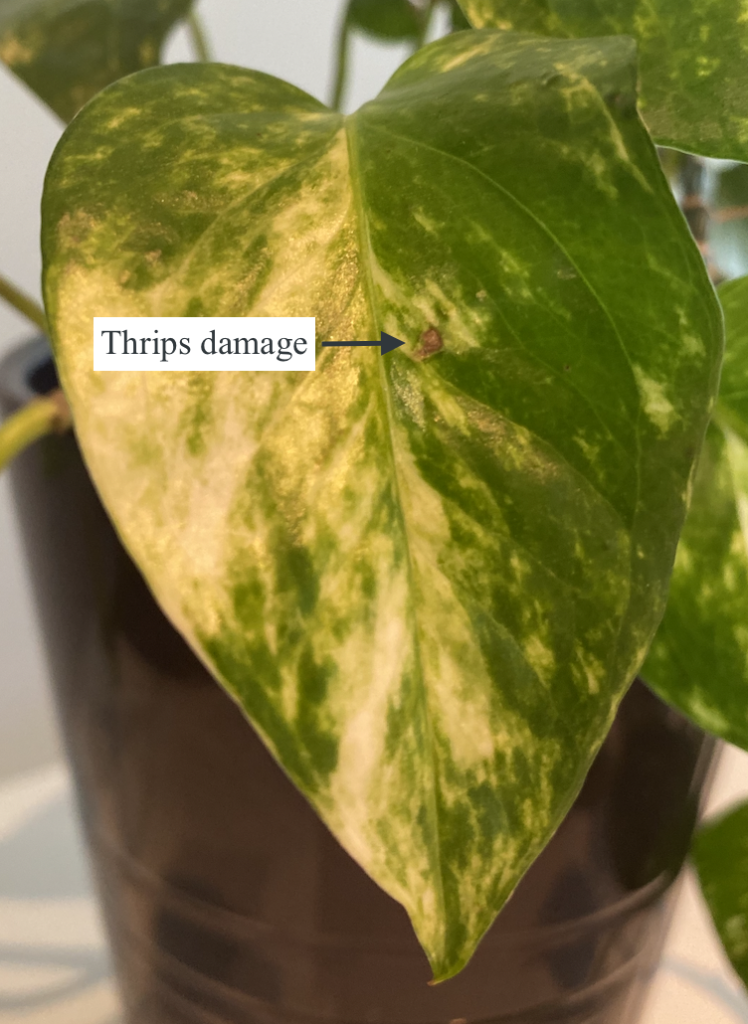
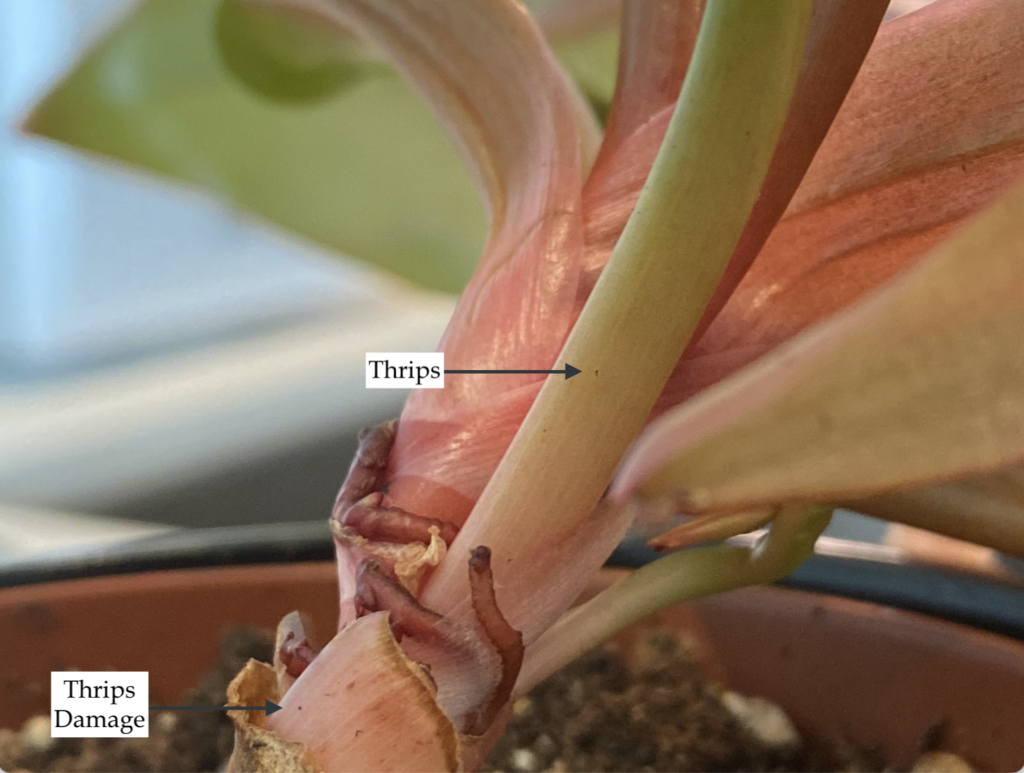
How Do I Get Rid Of Thrips?
There are many ways to get rid of thrips. I am going to go over the method I use to get rid of thrips, followed by some other techniques you can try.
My Method:
- Inspect the leaves for any sign of thrips (I suggest looking in the afternoon as they come out to feed and its easier to see them).
- If there are any damaged leaves, I will remove them as long as I have at least one leaf remaining (this is the most effective step since thrips go into the tissue of the leaf).
- Spray the whole plant and the soil with homemade pesticide (1 spray bottle, 1 tbsp dish soap—not dish detergent, filtered water, 1 tsp neem oil) and leave it on the leaves for 20 minutes.
- After 20 minutes is up, I wipe any remaining spray off of the leaves. If it is completely dry, I will dampen a paper towel with the spray and wipe the leaves. If you leave the spray on too long, it can create a fungal situation.
- I suggest checking your plant daily and repeating these steps as required. It’s recommended to do it every 3 days if you catch it early. If you have an infestation, I would check it multiple times a day and wipe away any thrips you see.
Other Steps You Can Take
- Shower Plants: You can try and dislodge thrips in the shower or in the sink with a spray tap. Just make sure your water pressure isn’t so strong it could damage the plant. After showering the plant, follow the steps in my method above. I have found just showering the plant doesn’t do much.
- Lint Roller: If your plant has thicker foliage (and isn’t a new leaf), you can try and lint roll the leaf. TikTok said this would potentially remove any thrips or eggs that you can’t see. I’m on the fence with this method since thrips lay their eggs in the tissue of the plant. I believe you can pick up the ones on the surface, but that’s it. I have done this method before and damaged the foliage on a newer leaf. When I tried this method, I followed it with the steps in my method above.
- Sticky Traps: Yellow sticky traps inserted into the soil can be to try and trap adult thrips that may be flying around. I used these recently and was surprised at the success.
- Manufactured insecticides: As I mentioned earlier, thrips can become resistant to insecticides. However, you can use manufactured insecticides instead of the homemade pesticide I mentioned earlier. Just follow the instructions on the bottle for effectiveness.
How Can I Prevent Thrips?
- Wipe your leaves. On a weekly basis, I wipe the leaves of my plants with the homemade pesticide (neem oil spray) I mentioned earlier. This is a good time to inspect the leaves of your plant and prune any leaves that have signs of thrips.
- Quarantine new plants away from your other plants. Thrips can make their way into your home on new plants. Keep new plants away from your plant collection in case its This includes flowers.
- Wash clothing if you were somewhere infested. Thrips can be brought in on your clothes.
- Wash your produce. Thrips have been found on produce and have been transported into homes this way. Wash your produce and or put it in the fridge, away from your plants.
- Keep doors or windows closed. Thrips can be carried into your home by the wind. I personally wouldn’t bother with this measure as I like the fresh air.
I hope this guide was helpful for you. I wish you well on your thrips eradication.

